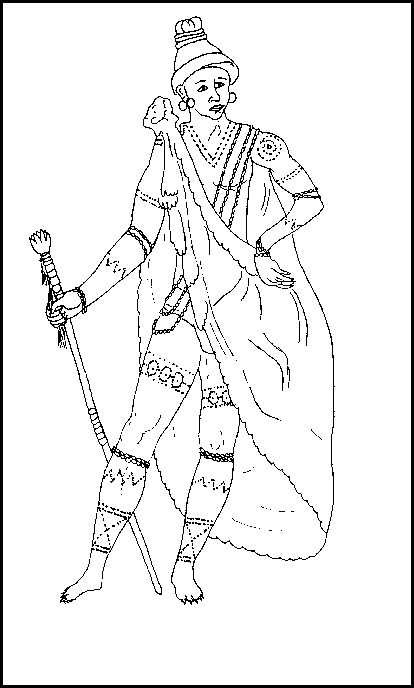|
Timucua Indians |

Timucua Indian
|
 Timucua Indian |
|
Timucua Indians The natives of North Florida were known as the Timucua and their settlement in this area was called the Village of Seloy. These Native Americans were said to be a handsome people most achieving an average height of six feet or more. The Timucua were hunters, gatherers and farmers. The women took care of the home, children and cooking while the men provided the food and protection of the family. The Timucua Indians had a way of life that allowed them to live and prosper. These Indians were living in Florida and Georgia when the French and Spanish first made contact in the 1400s and 1500s. Politically, the Timucuas were never united. During the time the French were in Florida (1564), the three Headchiefs were Saturiwa (east and north of the St. Johns), Outina (West and South of the St. Johns), and Potano (west and northwest of Outina). These three chiefs were generally at war with one or the other. Battles were ended when one or two men were killed. Land was never captured. After the battle, everyone went back home. A Timucua village could range anywhere from 50 to 300 individuals. The Timucua lived in round huts of tree trunks woven with grape vines or thin pines. Most activities were done outside the hut, since these huts were small and possibly housed extended families. The Council House, which could seat all of the villagers on benches, would have been the most impressive building in the village. The Council House was used for ceremonies. The Timucuas had a variety of food gathering techniques, including fishing, hunting, gathering, and planting. The degree to which they depended on each was influenced by where they lived (throughout south Georgia and north Florida). Those that lived in areas with richer soils relied more heavily on farming (although other resources were still very important.) Timucuas that lived in coastal areas focused more on fishing. Fresh-water snails made up a large part of the diets of inland peoples. Along the salt marshes, oysters replaced snails. The arrival of the French and Spanish brought disease to the Timucua Indians. Thousands of the natives died. In 1763, the British received Florida in a treaty with Spain. The Spanish traveled to Cuba with the remaining Timucua Indians (no more than twelve). In 1767, 200 years after the first meeting with Europeans, the last Timucua Indian died, the Timucua culture died with him. 1. Where did the Timucua live? 2. How did the location of a Timucua village influence the life of the people? Use specific examples from the text. 3. Was the arrival of the French and Spanish good or bad for the Timucua. Explain your response. |
Links: |